Trending
Opinion: How will Project 2025 impact game developers?
The Heritage Foundation's manifesto for the possible next administration could do great harm to many, including large portions of the game development community.

Featured Blog | This community-written post highlights the best of what the game industry has to offer. Read more like it on the Game Developer Blogs or learn how to Submit Your Own Blog Post
Part one of this two-part article series explores musical approaches to timed challenges in Call of Champions, Hades' Star and Sports Scramble. Includes video examples and in-depth discussion of strategies and contrasting techniques.

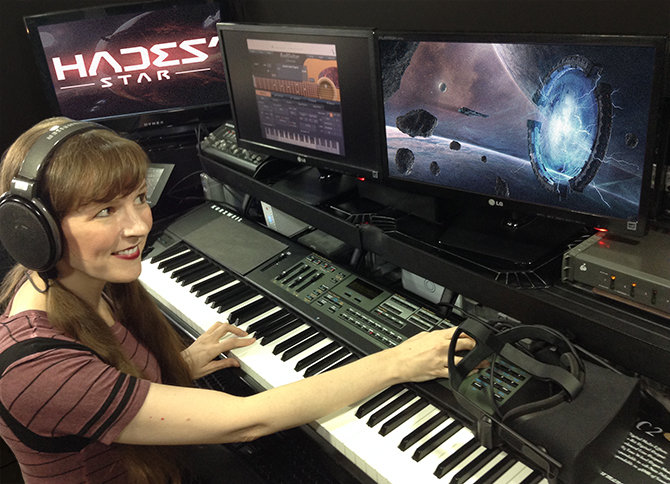
By Winifred Phillips | Contact | Follow
Welcome! I'm video game composer Winifred Phillips, and in this month's article, I'd like to go into some depth about an interesting aspect of our work as game composers - creating music for timed challenges. In timed challenges, players must complete a set of tasks within a limited window of time. Over the years, I've created music for lots of timed challenges featured in highly divergent projects, from the darkly strategic space battles of Hades' Star (pictured above), to the wacky assembly-line mayhem of the Fail Factory VR game, to the brand-new DLC release from one of my most recent projects -- the Spyder video game. It was this most recent release that actually got me thinking a lot about how difficult timed challenges can be for game composers.
Developed by Sumo Digital, the Spyder game stars a high-tech robotic spider named Agent 8, who carries out secret missions on behalf of an elite spy agency. 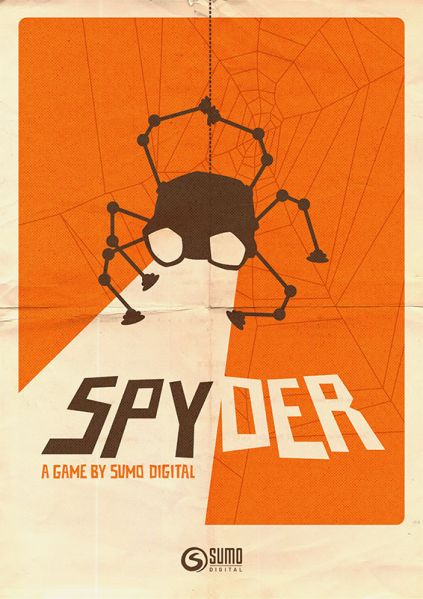
Since all spies need to keep their awesome abilities in tip-top shape, the spy agency has helpfully provided a set of training exercises for its roster of agents. Of course, Agent 8 is a tiny mechanical robot, so his training missions have to be designed especially for him. In this unique and ambitious initiative, Sumo Digital is now releasing a new training mission for Agent 8 on a daily basis. Each training mission is timed, so I composed music that was structured to accentuate the fun and tension of a timed challenge.
The circumstances of gameplay for this DLC was distinctive, which made my job especially interesting. Each of Agent 8's training missions offers mind-twisting challenges, and no single mission can be completed twice. Once players have successfully finished the day's training mission, they'll have to wait until the next day for another mission to become available with a whole new set of challenges. Since each of the training missions are timed, and there is no possibility of replaying any successfully-completed mission, the tension can potentially build much higher than what players might normally experience. A big part of this anxiety is propelled  by the inexorable ticking of the clock as it counts down the allotted time. All this comes together to create a mish-mash of emotional elements and kinetic considerations that I had to reflect in the music I composed for the project.
by the inexorable ticking of the clock as it counts down the allotted time. All this comes together to create a mish-mash of emotional elements and kinetic considerations that I had to reflect in the music I composed for the project.
Timed challenges are unique, and require their own creative and technical approaches in order to be as impactful as possible. With that in mind, I'll be dedicating my next two articles to the process of creating music for timed challenges. Along the way, I'll be sharing my music composition strategies for timed challenges from five of my video game projects:
In part one of this two-part article series, we'll be discussing musical approaches to timed challenges in Call of Champions, Hades' Star and Sports Scramble. Part two will elaborate on dynamic music strategies for timed challenges, including both the Fail Factory VR game and my latest project, the Spyder Micro Missions. During these two articles, our discussion will include an assortment of implementation structures, so let's start with the most basic way to address the issue.
As game composers, let's imagine that we've been assigned to create music that will accompany players as they accomplish a set of goals while watching an inexorable countdown clock. The timed challenge will be a finite length, but here's the twist -- the music will be shorter than the length of the challenge. Therefore, the music has to loop.
 This is the least intuitive way to handle a timed challenge, but we'll all be asked to create loops for timed challenges at least once in our careers. Usually, the motivation behind this approach is purely logistical. The game developers are commissioning a set amount of music for the project, and they want to stretch that music as far as possible to provide as much musical coverage for the game as they can. Allocate less music for one part of the game, and there's more available to apply elsewhere. It's a difficult decision that development teams have to make in order to provide the best musical experience for their players. However, it still leaves the composer in the sticky situation of creating a musical loop for a gameplay scenario that is designed to continually escalate in tension and intensity. Because it's a loop, the music can't escalate along with the gameplay. What can we do about that?
This is the least intuitive way to handle a timed challenge, but we'll all be asked to create loops for timed challenges at least once in our careers. Usually, the motivation behind this approach is purely logistical. The game developers are commissioning a set amount of music for the project, and they want to stretch that music as far as possible to provide as much musical coverage for the game as they can. Allocate less music for one part of the game, and there's more available to apply elsewhere. It's a difficult decision that development teams have to make in order to provide the best musical experience for their players. However, it still leaves the composer in the sticky situation of creating a musical loop for a gameplay scenario that is designed to continually escalate in tension and intensity. Because it's a loop, the music can't escalate along with the gameplay. What can we do about that?
Spacetime Studios developed the Call of Champions MOBA (Massively Online Battle Arena) game. As a well-reviewed game developed exclusively for mobile platforms, Call of Champions was the first-ever 5 minute version of the popular MOBA strategy game style. All battles were time-limited to 5 minutes, and whoever had the upper hand when time ran out would emerge the victor of the match.

When I was hired to compose the music for Call of Champions, the development team had already created a music implementation plan that included a three-minute looping structure for battle gameplay. So when the battle was reaching its finale, the music would not be nearing its end. Instead, it would have already looped back to the beginning and be somewhere in the middle when the match concluded. Nevertheless, I knew I wanted my music for these battles to emphasize the timed nature of gameplay.
 I addressed the issue by composing music that overtly and aggressively asserted demarcations at regular intervals. For nearly every eight bar sequence, the music dramatically changes. This has the effect of imposing a sensation of changeable gameplay and quickly-altering circumstances. The rapidly shifting musical content also serves to emphasize the passage of time. To make this effect work while retaining musicality, I arranged the music structure so that it cycled frequently through melodic themes, b-sections, and bridges. When I returned to thematic content, I introduced variation while retaining the same recognizable melodic motifs. Periodically, I introduced tension-building sections that included orchestral surges or ascending melodic lines, underscoring a sense of urgency and haste.
I addressed the issue by composing music that overtly and aggressively asserted demarcations at regular intervals. For nearly every eight bar sequence, the music dramatically changes. This has the effect of imposing a sensation of changeable gameplay and quickly-altering circumstances. The rapidly shifting musical content also serves to emphasize the passage of time. To make this effect work while retaining musicality, I arranged the music structure so that it cycled frequently through melodic themes, b-sections, and bridges. When I returned to thematic content, I introduced variation while retaining the same recognizable melodic motifs. Periodically, I introduced tension-building sections that included orchestral surges or ascending melodic lines, underscoring a sense of urgency and haste.
These were solutions born of necessity, but they worked within the Call of Champions battle sequences. Here's a video of one of these timed battles, including the music I created to accompany the action:
So now that we've looked at the difficulties imposed by the linear loop structure, let's take a look at the next logical approach.
Video game experiences are distinguished by their changeable nature. Gamers are usually afforded enough personal agency to shape the nature of their gameplay journeys. This tends to make the contours of their adventures difficult to predict. How long will a typical gamer take to solve a puzzle, or complete a quest? Who knows for sure? For this reason (among others), music composition for games has pursued interactive structures and techniques that allow the music to adapt to player choice.
 However, in the case of a timed challenge, we can predict exactly how long it will take for a gamer to complete the assigned objective (or fail to complete it). If the development team decides that the length of the music accompanying a timed challenge will correspond to the length of the challenge, then this is the rare in-game circumstance in which we can compose linear music that features a definitive beginning, middle and end.
However, in the case of a timed challenge, we can predict exactly how long it will take for a gamer to complete the assigned objective (or fail to complete it). If the development team decides that the length of the music accompanying a timed challenge will correspond to the length of the challenge, then this is the rare in-game circumstance in which we can compose linear music that features a definitive beginning, middle and end.
That being said, composing this music isn't the same as composing for traditional linear media. While there are similarities, the biggest difference lies in the role that the music plays. For TV and film, music serves as a scene-setting accompaniment that hits the right emotional notes and helps to tell a story. But music in a timed gameplay challenge is a source of information and a warning system. If we do an expert job, players may come to rely heavily upon the music we create to help them complete the task within the allotted time. Here's an example:
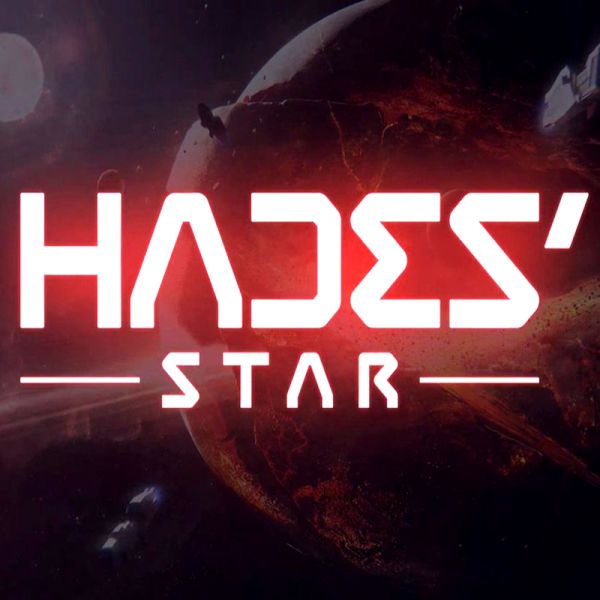 Hades' Star is an expansive space strategy game with a persistent universe and thousands of players. The game gives players the opportunity to build an interstellar empire by exploiting the resources of numerous star systems while fighting off relentless competition. Designed with thoughtful strategists in mind, most of the gameplay proceeds at a measured pace. Every so often, however, an opportunity shows up to quickly earn large rewards in a high-stakes multiplayer free-for-all challenge that takes 5 minutes to complete. Players rush into a system circling an unstable Blue Star. The system will be completely destroyed in five minutes, and players work to survive the hostile environment while mercilessly attacking each other. All the while, the hazardous boundaries of the blue star system encroach from all sides, inexorably contracting in size until the system reaches a single point and the Blue Star explodes, leaving nothing behind. The player who manages to survive up until the final moment wins the match and reaps the rewards.
Hades' Star is an expansive space strategy game with a persistent universe and thousands of players. The game gives players the opportunity to build an interstellar empire by exploiting the resources of numerous star systems while fighting off relentless competition. Designed with thoughtful strategists in mind, most of the gameplay proceeds at a measured pace. Every so often, however, an opportunity shows up to quickly earn large rewards in a high-stakes multiplayer free-for-all challenge that takes 5 minutes to complete. Players rush into a system circling an unstable Blue Star. The system will be completely destroyed in five minutes, and players work to survive the hostile environment while mercilessly attacking each other. All the while, the hazardous boundaries of the blue star system encroach from all sides, inexorably contracting in size until the system reaches a single point and the Blue Star explodes, leaving nothing behind. The player who manages to survive up until the final moment wins the match and reaps the rewards.
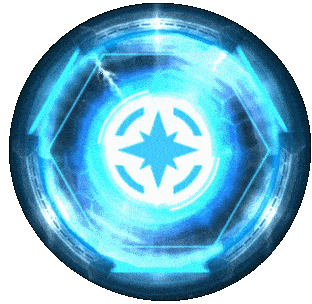 The team at developer Parallel Space asked me to compose a piece of music with two distinct variations. Version 1 would be an atmospheric track used for gameplay within the White Star systems. This track would be five minutes long, and would need to loop so that it could accompany extended strategic gameplay sessions. However, Version 2 would be more intense, and would be featured during gameplay within Blue Star Systems. It would start out sounding similar to White Star gameplay, but three minutes into its length, it would diverge into all-new material. This new musical content would need to convey messages to the player about the progression of the Blue Star system contraction, the urgency of the situation, and the limited time remaining.
The team at developer Parallel Space asked me to compose a piece of music with two distinct variations. Version 1 would be an atmospheric track used for gameplay within the White Star systems. This track would be five minutes long, and would need to loop so that it could accompany extended strategic gameplay sessions. However, Version 2 would be more intense, and would be featured during gameplay within Blue Star Systems. It would start out sounding similar to White Star gameplay, but three minutes into its length, it would diverge into all-new material. This new musical content would need to convey messages to the player about the progression of the Blue Star system contraction, the urgency of the situation, and the limited time remaining.
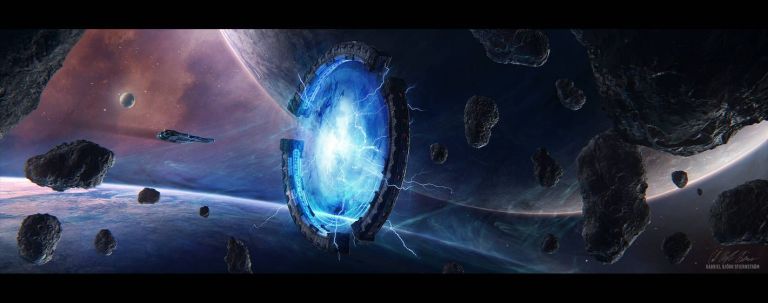
I've included a video showing an entire Blue Star playing session from start to finish. You'll notice that the first three minutes of music are unhurried and thoughtful. However, once the player has reached the three minute mark, urgent strings begin playing alongside heavy synth rhythms and a large horn section. Unlike the intermittent string rhythms heard earlier, this insistent momentum continues unbroken and builds steadily from this point forward -- sending a clear signal to the player about the passage of time. It's just as effective a notification as any visual warning message or beeping alarm. When the player only has 30 seconds remaining, the music sharply changes, darkening with dissonant surges and orchestral bursts. Players who have participated in more than one Blue Star match will recognize this musical change as their 30 second warning. The horror-inspired musical score finally crescendos when the Blue Star explodes, destroying the star system and ending the match:
Now let's take a look at another way to approach the composition of linear non-looping music for a timed challenge.
In most circumstances, game music is designed to support the gameplay experience in subtle, transparent ways. Players will notice the music, but they won't usually focus on it. However, there are some games that use music as an overt component of the gameplay mechanic, with the intention of grabbing attention and communicating vital information in an assertive way. The Bowling sections in the Sports Scramble VR game are a great example of this. Sports Scramble is a VR game that takes famous sports and turns them upside-down, introducing oddball rules and equipment. Fun times and hilarity ensue. The development team at Armature Studio asked me to compose several linear tracks for these timed challenges.

The Bowling music in Sports Scramble is timed to play for the entire 1 minute and 40 second length of the challenge, with a linear structure that includes a beginning, middle and end.  This linear structure and specific timing are qualities it shares with the Blue Star music I composed for Hades' Star. But unlike the Blue Star music in Hades' Star, the Bowling music for Sports Scramble includes a voice performance of a starting countdown that's integrated directly into the track, along with a musical build-up and a starting bell that signals the beginning of gameplay. Like the Call of Champions music, the music from the Sports Scramble Bowling challenge is structured with lots of sections that help to emphasize the passage of time. This becomes much more overt and aggressive when there's only 30 seconds left of play. I've included a video of the Bowling gameplay below. Notice how the music begins building to a crescendo at the 1 minute 30 second mark. This is followed by a vocal countdown that's aligned with the tempo of the piece, leading into an ending buzzer:
This linear structure and specific timing are qualities it shares with the Blue Star music I composed for Hades' Star. But unlike the Blue Star music in Hades' Star, the Bowling music for Sports Scramble includes a voice performance of a starting countdown that's integrated directly into the track, along with a musical build-up and a starting bell that signals the beginning of gameplay. Like the Call of Champions music, the music from the Sports Scramble Bowling challenge is structured with lots of sections that help to emphasize the passage of time. This becomes much more overt and aggressive when there's only 30 seconds left of play. I've included a video of the Bowling gameplay below. Notice how the music begins building to a crescendo at the 1 minute 30 second mark. This is followed by a vocal countdown that's aligned with the tempo of the piece, leading into an ending buzzer:
In this example, the music for the timed challenge is providing vital information to the player in a manner that's meant to arrest attention. Because the music is structured to last the entire length of the challenge, it has the option to send signals about important gameplay events.
Now we've looked at ways that music can be structured to align to gameplay circumstances during a timed challenge, but with the caveat that those circumstances must be fixed and predictable in nature. What if there are changeable components to the timed challenge, and the music needs to adapt to those changes?
In part two of this two-part article series, I'll be addressing this issue with a discussion of music composition strategies for timed challenges in the VR game Fail Factory and the training mission DLC from the Spyder game on Apple Arcade. Until then, thanks for reading!
 Winifred Phillips is a well-known video game composer whose latest project is the hit PlayStation 5 launch title Sackboy: A Big Adventure (soundtrack album now available). Popular music from Phillips' award-winning Assassin's Creed Liberation score is featured in the performance repertoire of the Assassin's Creed Symphony World Tour, which made its Paris debut with performances by a top 80-piece orchestra and choir. As an accomplished video game composer, Phillips is best known for composing music for games in five of the most famous and popular franchises in gaming: Assassin’s Creed, God of War, Total War, The Sims, and Sackboy / LittleBigPlanet. She is the author of the award-winning bestseller A COMPOSER'S GUIDE TO GAME MUSIC, published by the MIT Press. As one of the foremost authorities on music for interactive entertainment, Winifred Phillips has given lectures at the Library of Congress in Washington DC, the Society of Composers and Lyricists, the Game Developers Conference, the Audio Engineering Society, and many more. Phillips’ enthusiastic fans showered her with questions during a Reddit Ask-Me-Anything session that went viral, hit the Reddit front page, received 14.9 thousand upvotes, and became one of the most popular gaming AMAs ever hosted on Reddit. Follow her on Twitter @winphillips.
Winifred Phillips is a well-known video game composer whose latest project is the hit PlayStation 5 launch title Sackboy: A Big Adventure (soundtrack album now available). Popular music from Phillips' award-winning Assassin's Creed Liberation score is featured in the performance repertoire of the Assassin's Creed Symphony World Tour, which made its Paris debut with performances by a top 80-piece orchestra and choir. As an accomplished video game composer, Phillips is best known for composing music for games in five of the most famous and popular franchises in gaming: Assassin’s Creed, God of War, Total War, The Sims, and Sackboy / LittleBigPlanet. She is the author of the award-winning bestseller A COMPOSER'S GUIDE TO GAME MUSIC, published by the MIT Press. As one of the foremost authorities on music for interactive entertainment, Winifred Phillips has given lectures at the Library of Congress in Washington DC, the Society of Composers and Lyricists, the Game Developers Conference, the Audio Engineering Society, and many more. Phillips’ enthusiastic fans showered her with questions during a Reddit Ask-Me-Anything session that went viral, hit the Reddit front page, received 14.9 thousand upvotes, and became one of the most popular gaming AMAs ever hosted on Reddit. Follow her on Twitter @winphillips.
Read more about:
Featured BlogsYou May Also Like